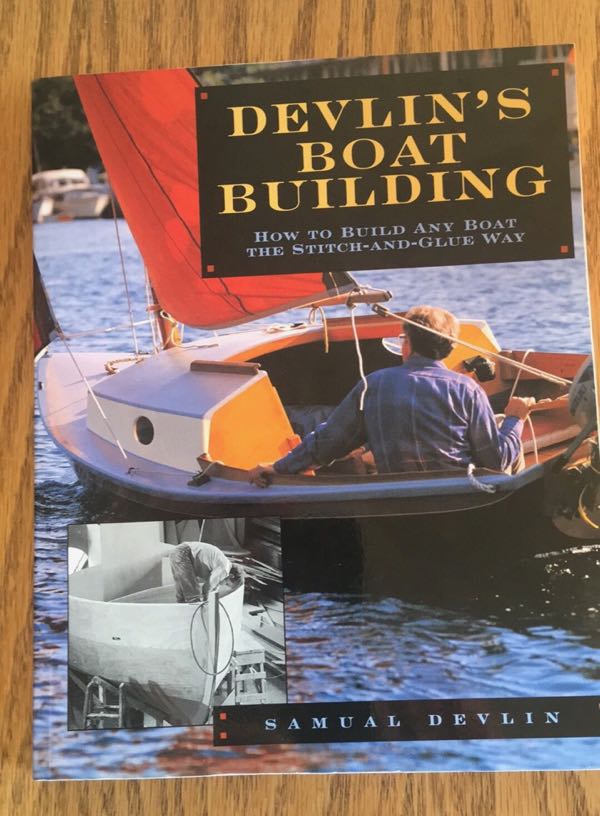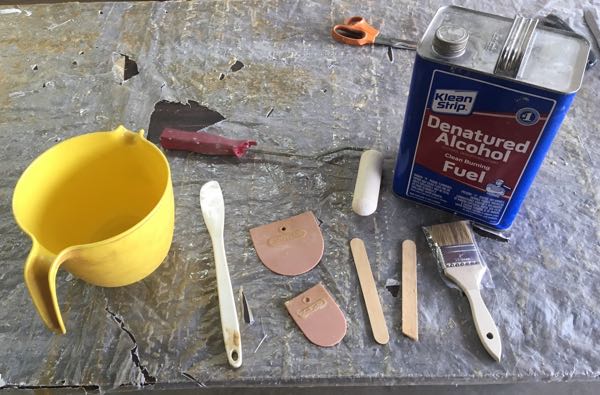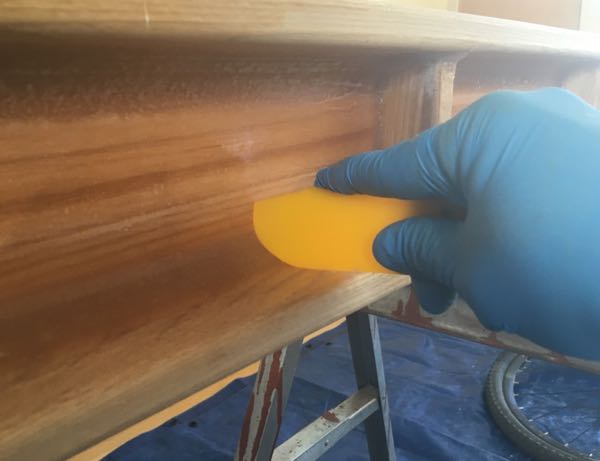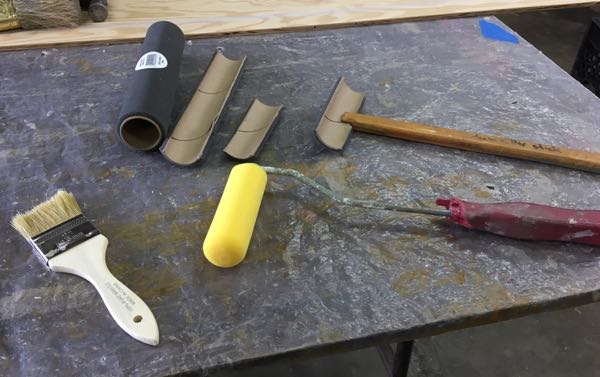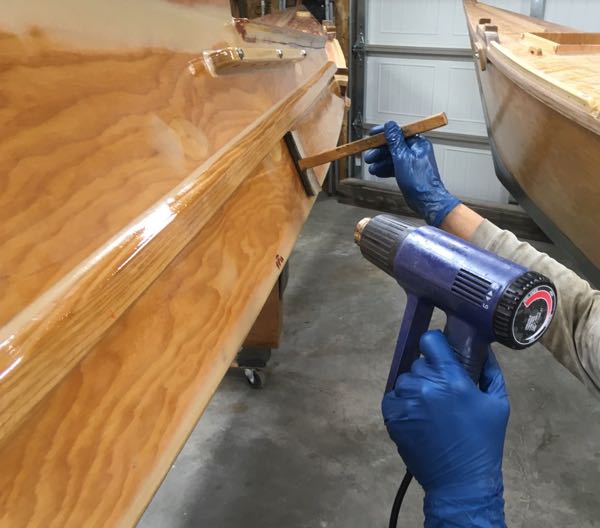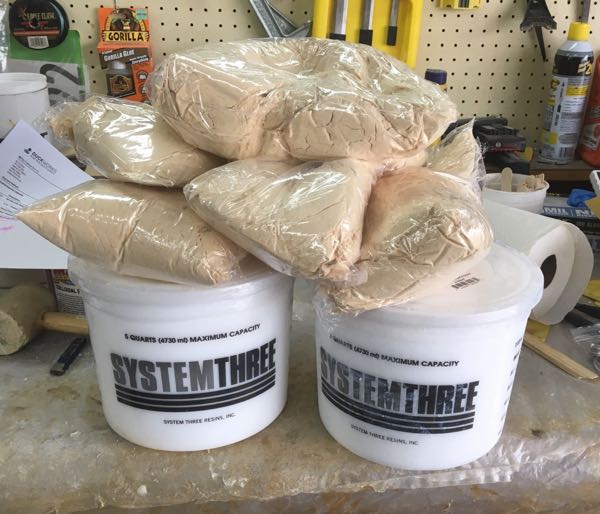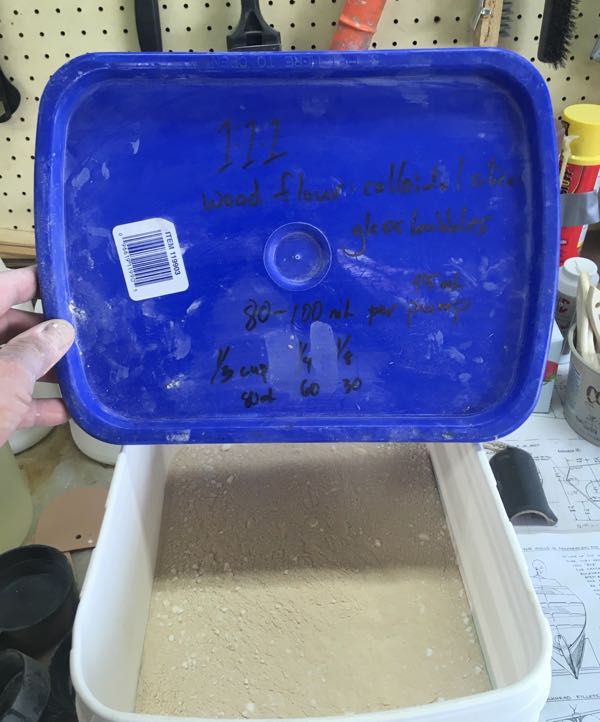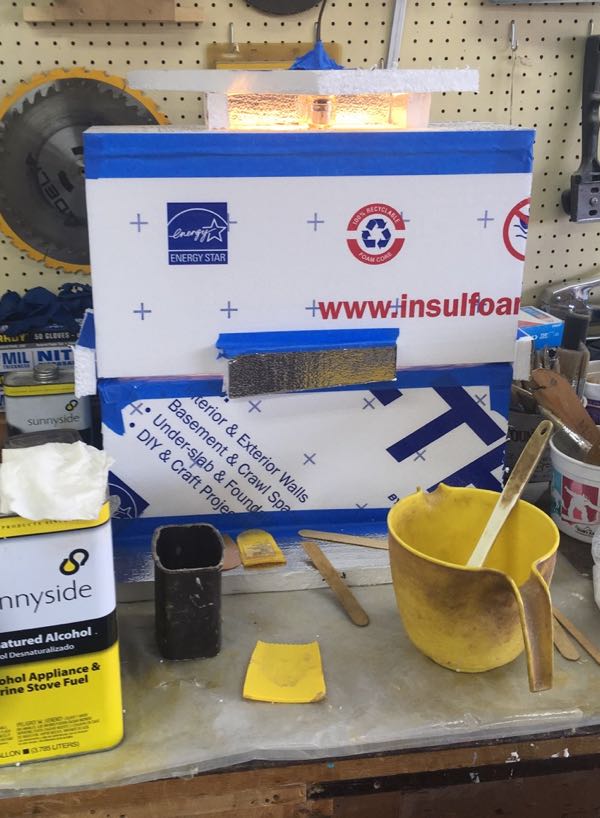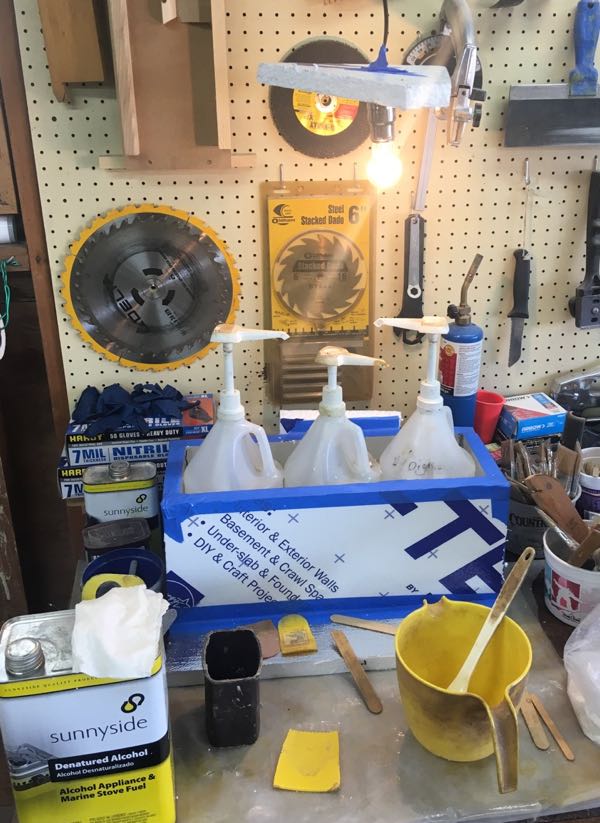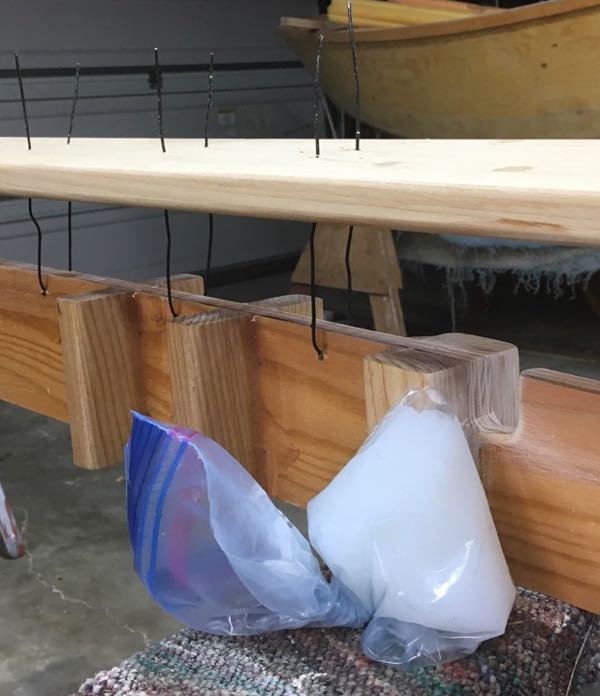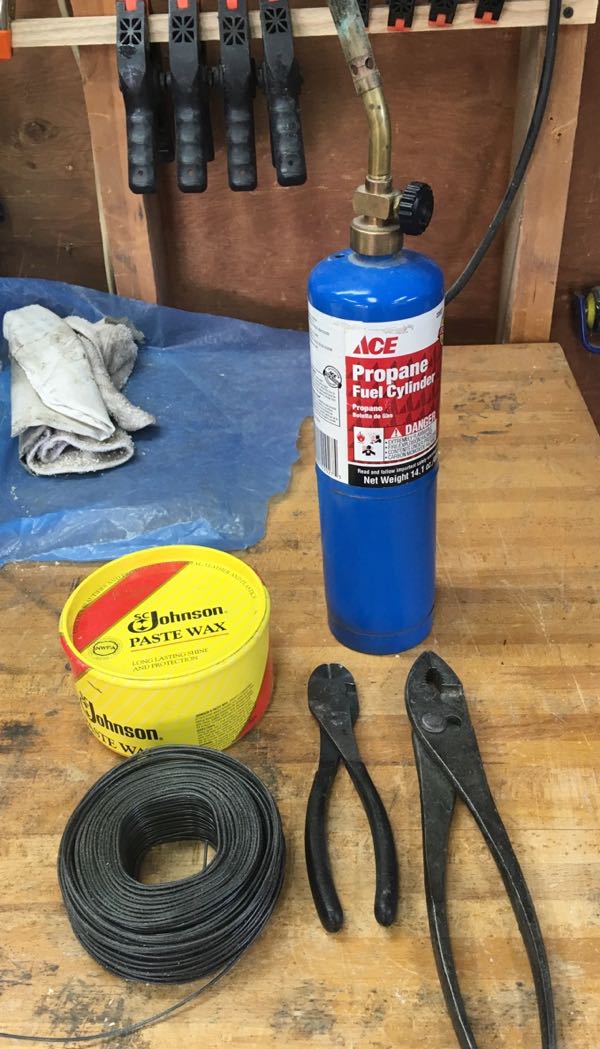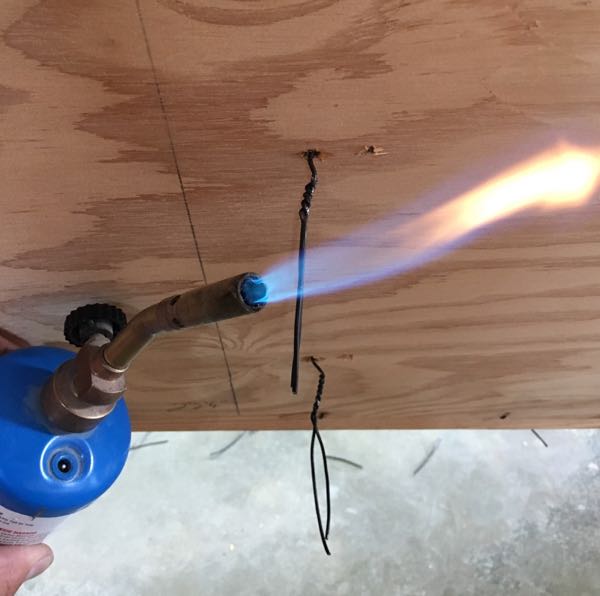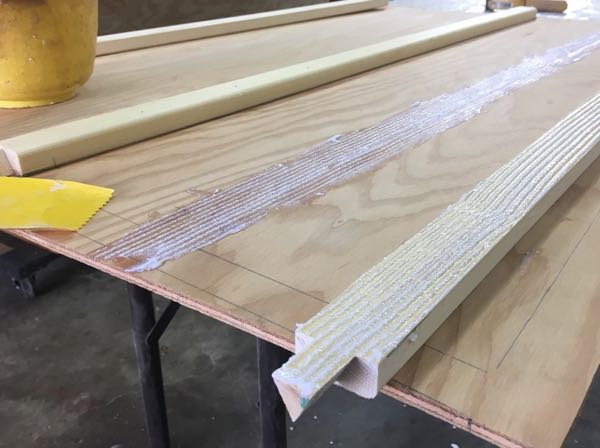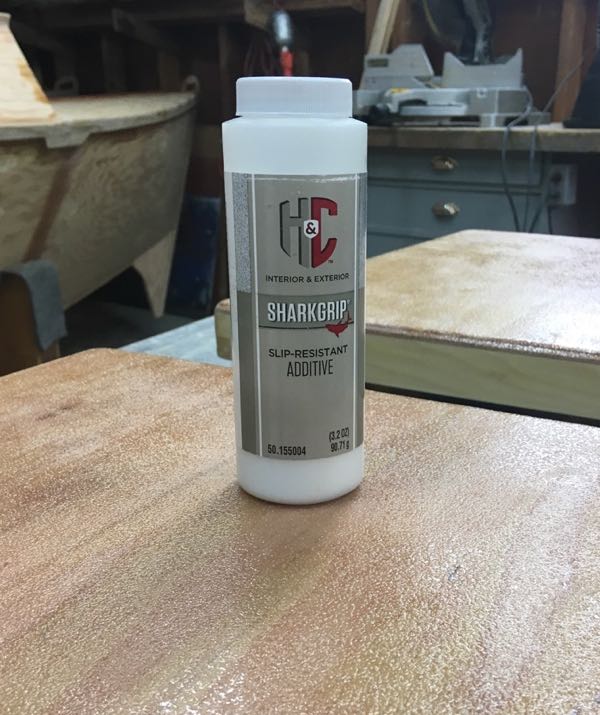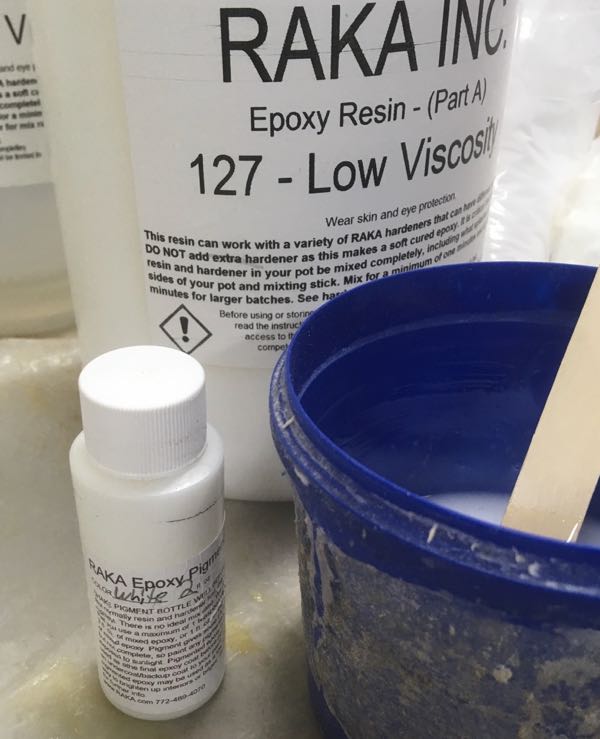Epoxy Tips 'n' Hints
I’m not presumptuous enough to think that I have discovered some unknown tricks for working with epoxy. I just want to gather in one place a few things I have learned from others. Maybe just so that I don’t forget them! For more great epoxy tips, see:
Tools
- Plastic mixing bowls
- Plastic mixing spoons
- Measuring cups for fillers
- Wooden tongue depressors, some cut an angle for a scraper
- Auto body scrapers cut to different sizes for fillets
- Big auto body scrapers to squeegee around epoxy
- Thin plastic cut with pinking shears for laminating
- Ziploc bag with the corner cut out for piping fillet mix into corners
- Chip brushes
- Small foam rollers with a rounded, foam tip
- 1/3 of foam roller cover mounted on a stick for smoothing epoxy coats
- Heat gun
- Denatured alcohol for cleanup; acetone if the epoxy is cured
Fillers
- For gluing bare wood to bare wood, I used milled cotton fiber.
- For epoxy coated surfaces, I used colloidal silica.
- For fillets, I used 1/3 colloidal silica, 1/3 wood flour, 1/3 glass bubbles.
- For fairing, I used a used a 4:1 mix of phenolic micro-balloons to collidal silica.
- When mixing graphite, I mixed at 10% by volume.
Cold Weather
I built an “epoxy box” when the nights started getting cold so that I could keep the epoxy runny enough to work with the pumps. The box was made out of foam board with a small light bulb hung inside.
When the temps stayed below 50° I created a “tent” out of tarps inside my garage and put a portable propane heater inside. This setup would keep the temperature in the tent in the 60s and 70s even when the outside temps were below freezing. It was dark and cramped but it worked.
Techniques
I got some really good results with epoxy coating on flat and vertical surfaces. My best tools were a small foam roller with a foam tip. That allowed me to get into lots of corners. After rolling, I came back with a partial foam roller mounted on a stick to “tip” the roller’s stippling away. I was able to get the smoothest results by tipping while heating the surface with a heat gun.
I tried pulling all my stitching wires instead of just cutting them flush. The easiest way to get the wires out is to coat them with wax before inserting them. Usually these wires would pull right out later. However, if a wire was stuck I would heat it with a torch and then pull it out.
Epoxy Brands and History
I started rebuilding platforms with West System epoxy left over from my son’s boat. When that ran out I looked for something cheaper and less toxic. So I used DWX from Duckworks (UV resistant) for a while but DWX was discontinued in Oct 2017. Then I started using Raka and was very happy with the performance and the price.
